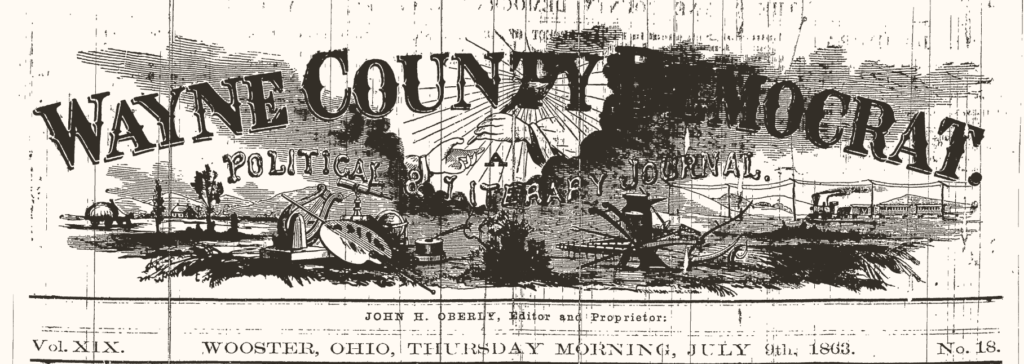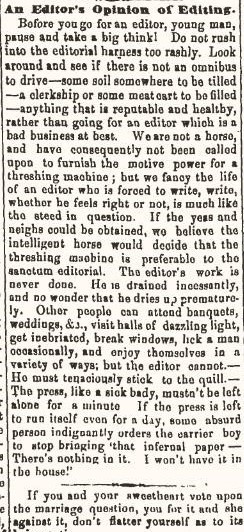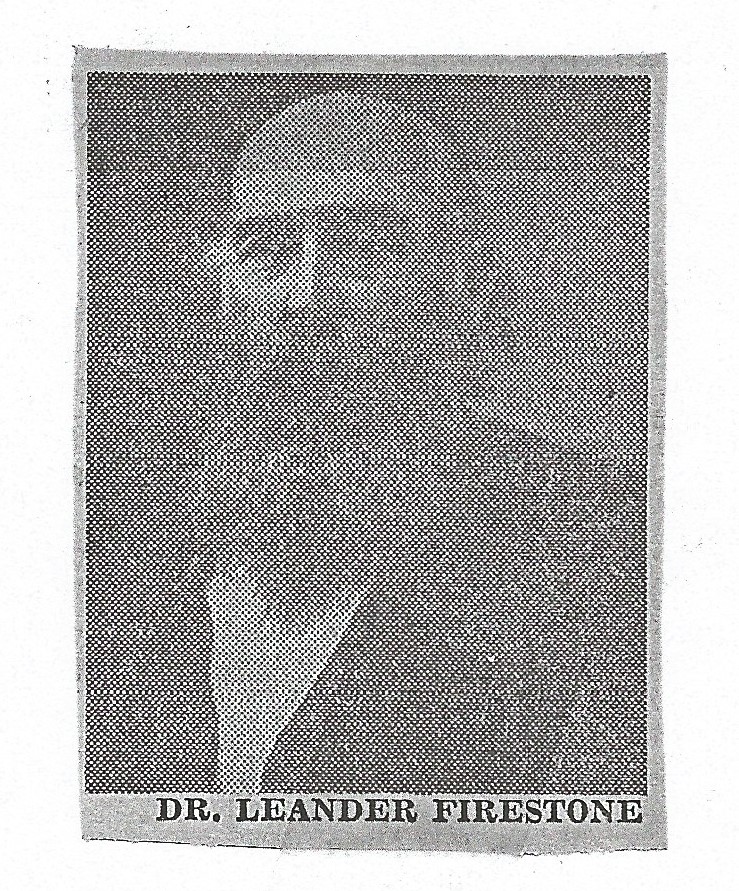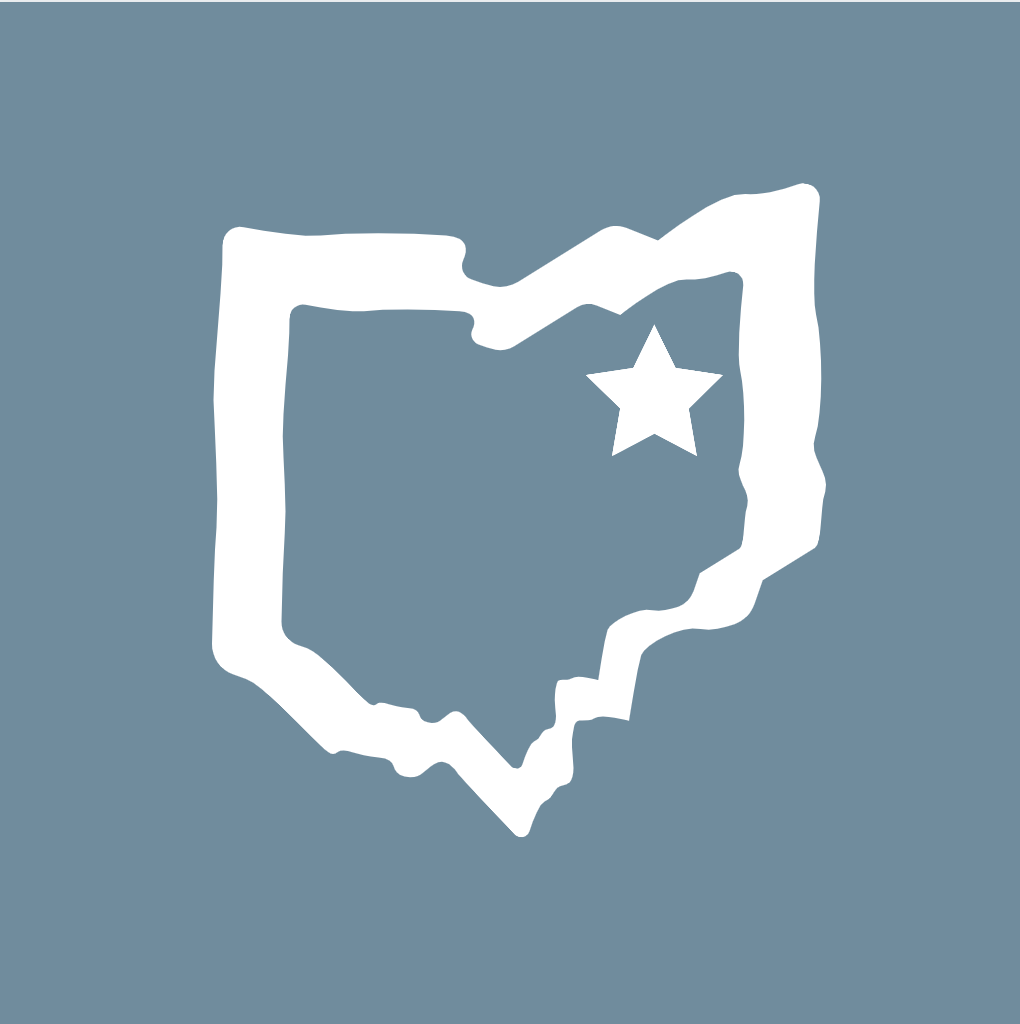Editors

When Judge Levi Cox arrived in Wayne County in the early 1800s, he set out to fill an otherwise empty space in community. Judge Cox, along with Samuel Baldwin, printed the Ohio Spectator in 1817: it was Wayne County’s first newspaper.1
Most of the editors and proprietors of Wayne County were powerful men who worked in teams: Judge Cox and Mr. Baldwin are an excellent first example. Throughout the nineteenth century, newspaper control cycled through the hands of some of Wooster’s most prominent citizens. The Wayne County Democrat was owned by lawyers, doctors, judges, and political leaders. These powerful men shaped the Wooster community with printed stories, political pieces, and endorsed advertisements, but also more directly with their engagement as members of the town.

Indirectly, the men who owned the papers shaped the community because they oversaw how the news was interpreted and distributed back into the community. The most dramatic example of this was the Wayne County Democrat under John H. Oberly. Oberly, in defiance of tradition, ran the paper on his own during the Civil War – he had no partner and no co-editor. Oberly’s paper was different: he ran a dramatic splash panel on the top of the front page each day and went so far as to refer to his creation as “A Political and Literary Journal” instead of a newspaper.2 After Oberly left, the paper was quickly returned to its traditional look and style by his successors.3 But the stylistic flairs and prominence of poetry and serials – even during wartime – show the power that editors had to determine what counted as news and shape community interest. Additionally, conversations between editors demonstrate how editors used their position to influence community opinion. In some issues, whole articles that had recently been printed in the Wooster Republican would appear in the Wayne County Democrat with scathing replies.4 The newspapers functioned in some ways as a conversation between editors, parrying political pieces with responses of their own.
The editors and proprietors also engaged with their community through political and financial organizations. Some of the men associated with the Wayne county press – most notably Dr. Firestone, editor from 1884 to 1886 – were heavily involved with the establishment and financing of the College of Wooster.5 Others were directly involved in the political machine of Wayne County, with the Hon. E. B. Eshelman, long time editor of the Wayne County Democrat, serving in the Ohio Legislature as well.6
The editors and proprietors of Wayne County newspapers were wealthy and educated men of good standing in their communities. Their decisions on what was published, and where, shaped community discussion and interest. They actively worked to produce newspapers that they believed would contribute to the town’s success.

Footnotes:
1: B. F. Bowen, History of Wayne County Ohio, vol. 1 (Indianapolis: B. F. Bowen & Company, 1910), 313-314.
2: Wayne County Democrat, January 21, 1864, 1.
3: Wayne County Democrat, February 13th, 1868, 1.
4: For an example of a reprinted excerpt, see: Wayne County Democrat, March 2, 1870, 2.
5: Lucy Lillian Notestein, “The Town—‘A True Likeness,’” in Wooster of the Middle West (Kent: Kent State University Press, 1971), 15.
6: Bowen, History of Wayne County Ohio, vol. 1, 316.

